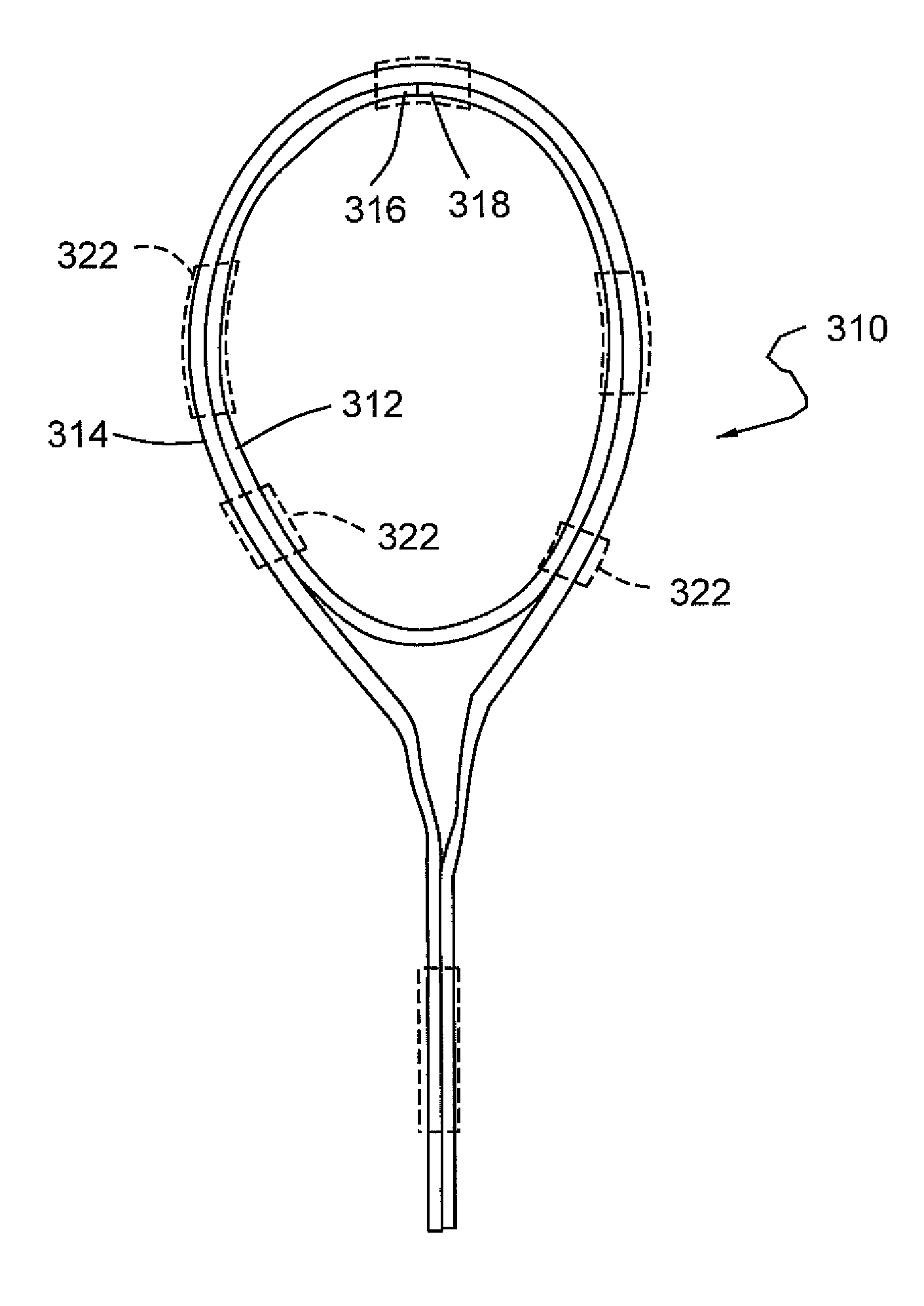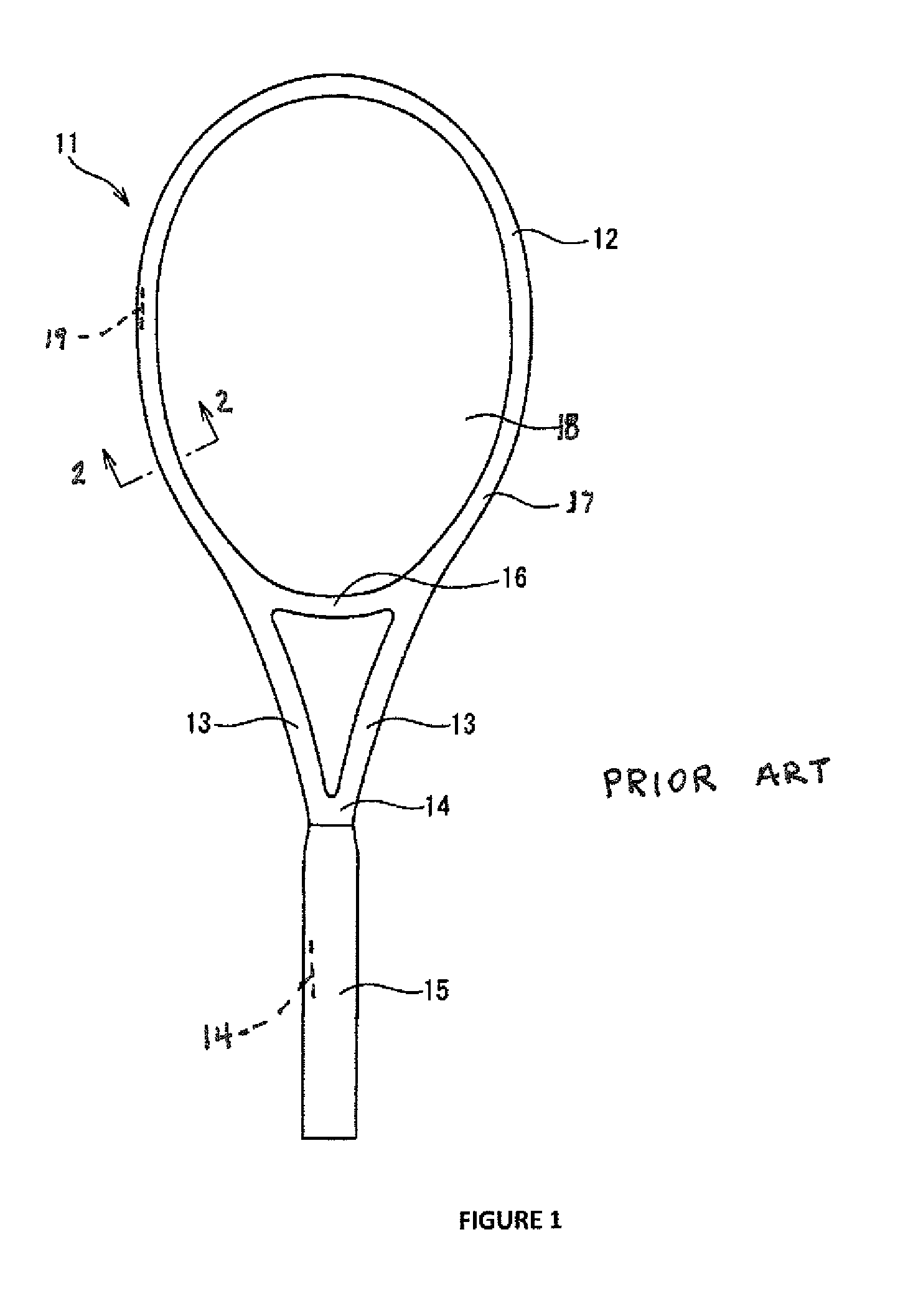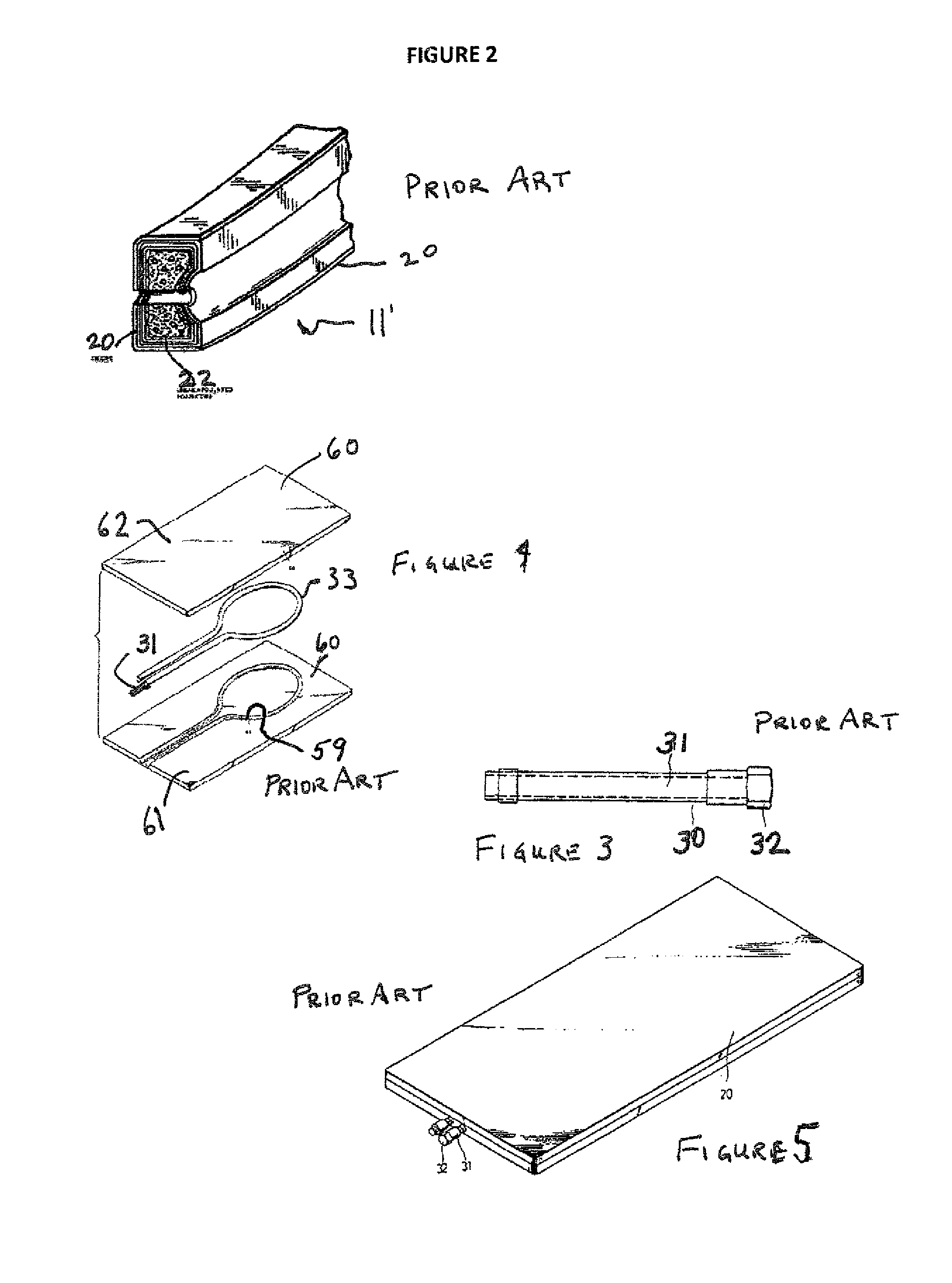Fiber composite and process of manufacture
a fiber composite and fiber technology, applied in the field of graphite resin composite components, can solve the problems of significant quality control and production problems, difficult control of internal divisions, bridges or lumens placed in these tubes, and hardening of the material of the layup of the tennis racket, etc., and achieves the effect of increasing the injury of shoulders and elbows
- Summary
- Abstract
- Description
- Claims
- Application Information
AI Technical Summary
Benefits of technology
Problems solved by technology
Method used
Image
Examples
second embodiment
[0135]FIGS. 10 and 11 show a second embodiment, where fiber tubes are placed within microencapsulated filled tubes and heated to solidify the multiple tubes for additional strength and rigidity in the racquet.
[0136]It is noted that the formation of two tubes, the filling of the tubes 12 and 12′ with foam plastic and microencapsulated foaming agent and the wrapping of the two tubes with a third tube 16 may be done prior to the application of heat to cause the plastic to foam.
[0137]Alternatively, microencapsulated foam material may be included in two different forms to form the foam plastic. The individual tubes being formed as described above (optionally over first and second tubular sleeves), the resultant handle of the tennis racquet is wrapped with a second layer 16 of thermoplastic carbon fiber sheeting as described above (optionally over a third tubular sleeve), and then the assembly heated a second time to a lower temperature. At the high temperature of the first racquet format...
third embodiment
[0153]The necessity of weights and balances in racquets are well known in the industry. Conventionally, however, these weights could only be added after the solidification of the graphite fiber composite. The third embodiment allows weights to be added in the racquet head itself during the manufacturing process, for example by placement within sleeve 40 (FIG. 6), or placement within the mold cavity. Alternatively, during the manufacturing process, be incorporated for the receipt of weights. The advantage of doing this during the manufacturing process is the consistency and ease with which structural weight can be added during mass machine production to, for example, balance the racquet head, and the ease with which the same may be customized after production.
[0154]This embodiment also allows the formation of multiple structures impossible with conventional technology because air would not be able to pass through objects within the tube.
[0155]FIG. 17 shows a finished customizable rac...
PUM
| Property | Measurement | Unit |
|---|---|---|
| pressure | aaaaa | aaaaa |
| width | aaaaa | aaaaa |
| temperature | aaaaa | aaaaa |
Abstract
Description
Claims
Application Information
 Login to View More
Login to View More - R&D
- Intellectual Property
- Life Sciences
- Materials
- Tech Scout
- Unparalleled Data Quality
- Higher Quality Content
- 60% Fewer Hallucinations
Browse by: Latest US Patents, China's latest patents, Technical Efficacy Thesaurus, Application Domain, Technology Topic, Popular Technical Reports.
© 2025 PatSnap. All rights reserved.Legal|Privacy policy|Modern Slavery Act Transparency Statement|Sitemap|About US| Contact US: help@patsnap.com



